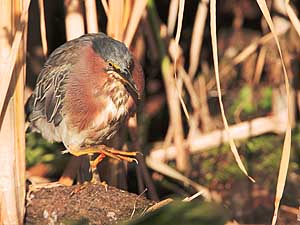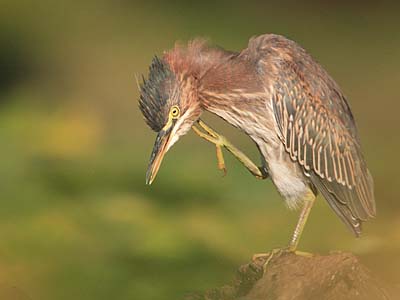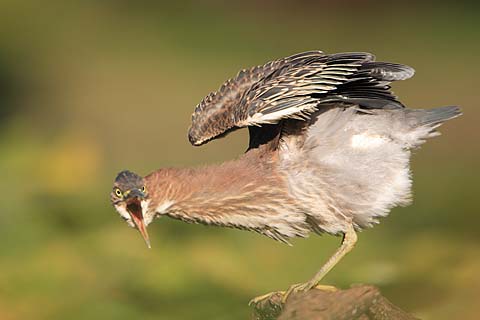
You’ve found a wildlife shot to match your vision. Getting the shot often requires something more. Call it doggedness, tenacity, perseverance, or simply patience.For the last few August days, I’ve been photographing juvenile Green Herons that migrate through Seattle’s Lake Washington Union Bay each year. Most perches the Herons hunt from are crammed against the cattails or deep in shade. Background is crucial, so when a Heron landed on a clean, sunlit perch, I didn’t waste the opportunity. I was in a kayak, and I made a slow, oblique approach, moving my paddle with careful deliberation and never looking straight at the bird. Green Herons use the same technique while hunting. They step forward with painstaking slowness so as not to alert their prey.

Four factors contribute to getting the shot. A long lens, relatively tame birds, and knowledge of bird behavior are three. I’m shooting with a 500mm f/4, which allows a working distance that minimizes disturbing the birds and helps to create soft, blurred backgrounds. Then I’m shooting in the Seattle Arboretum, alongside a canoe waterway where the birds are used to people. Seeing a kayak float by, the ducks and grebes merely move aside, and it’s usually easy to maneuver to get the sun over the shoulder without disturbing them. The Green Herons are more skittish, but they’ve gathered here for a couple of weeks now and are learning that canoeists or joggers pose little threat. A good knowledge of bird behavior spurs vision like a hyperdrive. In the case of these little Greens, I gleaned much by doggedly returning on successive days.

The fourth factor is simply patience. In the past I might have stopped shooting after getting a static shot and maybe some preening, or a hunting stance. Here I wait for more, and I’m rewarded with a neck scratch, a wing stretch, a neck stretch, a yawn and then more of the same when the bird turns to face right instead of left, yielding a whole set of new poses. Most of these little Green Herons will fly south in a couple of weeks, to be replace by Seattle’s rich array of over-wintering water birds that will arrive from the north to fill the Lake and Sound — and create new opportunities for the patient.
Gary